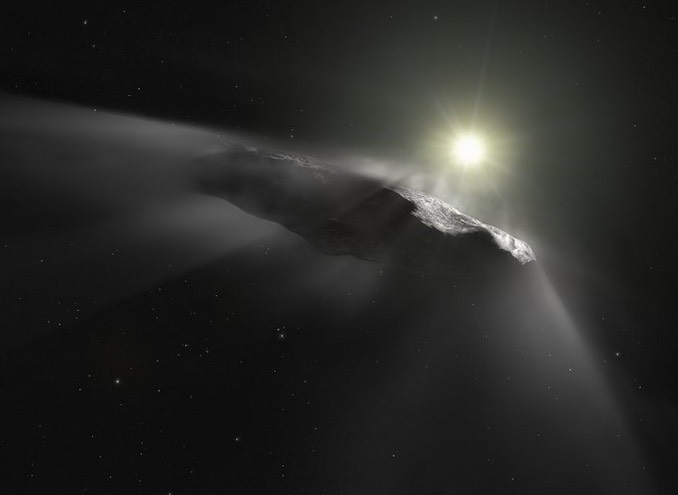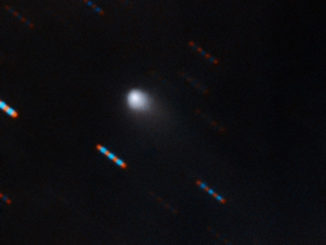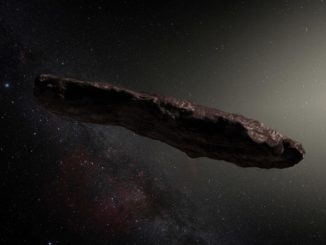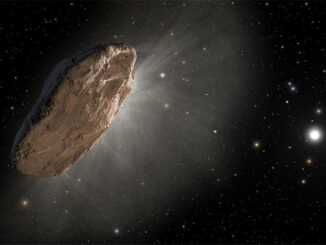
The cigar-shaped `Oumuamua caused quite a stir when it was first detected in October 2017. Astronomers analysing the trajectory of the 400-meter-long (1,300-foot-long) body concluded the strange object, presumably an asteroid, originated outside the Solar System and was thus the first known interstellar body to pass close by.
`Oumuamua (pronounced oh-MOO-ah-MOO-ah) now is beyond the orbit of Jupiter moving back toward interstellar space at a velocity of about 114,000 kph (71,000 mph), slowing down slightly under the influence of the Sun’s gravity.
But it’s not slowing down as much as celestial mechanics would predict. In fact, it’s getting a boost of some sort.
While it might be fun to imagine an alien spaceship proceeding on a mysterious mission, the answer is more down to Earth, so to speak. An international team of astronomers led by Marco Micheli of the European Space Agency has concluded `Oumuamua is most likely a comet, not an asteroid, getting a slight boost from material boiling away from its surface – outgassing – in the heat of the Sun.
“We think this is a tiny, weird comet,” Micheli said. “We can see in the data that its boost is getting smaller the farther away it travels from the Sun, which is typical for comets.”
Comets normally feature a cloud, or coma, of dust and gas as they warm up in the inner solar system, along with a characteristic tail. No such features were detected when astronomers turned their telescopes on `Oumuamua, “which is unusual,” said Karen Meech, an astronomer at the University of Hawaii. “We think that `Oumuamua may vent unusually large, coarse dust grains.”
In a report in the journal Nature, Micheli’s team speculates that the smaller grains that normally would form a coma and a tail eroded away during `Oumuamua’s interstellar voyage, leaving a cloud of larger particles that would be too dim to detect even for the Hubble Space Telescope.
The unexpected – and still unconfirmed – outgassing also makes it more difficult to trace `Oumuamua’s trajectory back to its point of origin. That was the original goal of the recent observations that found the velocity discrepancy.
“The true nature of this enigmatic interstellar nomad may remain a mystery,” said team member Olivier Hainaut of the European Southern Observatory. “`Oumuamua’s recently-detected gain in speed makes it more difficult to be able to trace the path it took from its extrasolar home star.”



